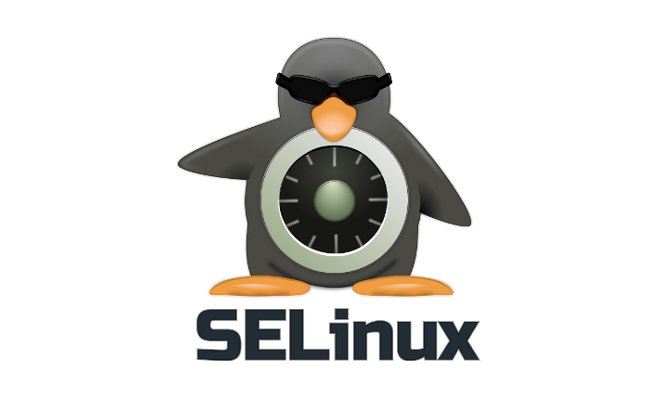Linux System Security Hardening with SELinux - A Comprehensive Guide
Introduction
In today’s digital landscape, ensuring the security of Linux systems is of paramount importance. Threats to sensitive data and unauthorized access are constant concerns for organizations and individuals alike. One effective method for enhancing Linux system security is through the use of SELinux (Security-Enhanced Linux). SELinux is a security mechanism that implements Mandatory Access Control (MAC) in Linux systems, providing granular access control over system resources and enhancing its defense capabilities.
In this comprehensive guide, we will delve into the concepts, installation, configuration, and management of SELinux. We will explore how SELinux operates, its key features, and the steps involved in leveraging SELinux for Linux system security hardening. By the end, you will have a solid understanding of how to utilize SELinux to bolster the security of your Linux systems.
Understanding SELinux: Concepts and Principles
Before diving into the specifics of using SELinux for system security hardening, let’s gain a fundamental understanding of its concepts and principles. SELinux operates on the basis of Mandatory Access Control (MAC), running on the Linux kernel. Unlike traditional Discretionary Access Control (DAC), SELinux provides fine-grained security control by assigning a unique security label to each system resource, such as files, devices, and processes. By defining detailed permission rules in its policy, SELinux limits process access to resources. This level of control ensures that even in the event of a compromised process or vulnerability, attackers find it challenging to gain unauthorized access to system resources and sensitive information.
Installing and Enabling SELinux
In most Linux distributions, SELinux is already installed and enabled by default. To verify the status of SELinux, you can use the command sestatus. If SELinux is not installed or enabled, you can install the necessary software packages and configure the settings by editing the configuration files.
SELinux Policy
Central to SELinux is its policy, which defines the rules and permissions for security contexts. Policy files are typically located in the /etc/selinux directory and can be managed and configured using specific tools. The policy governs the behavior of SELinux, ensuring that resources are accessed securely based on their security contexts.
Setting SELinux Labels
In SELinux, every system resource has a unique security context label. For files and directories, you can use the ls -Z command to view and modify the security context labels. Similarly, the ps -eZ command allows you to view the security context of processes. SELinux automatically assigns the appropriate security context labels when resources are created.
SELinux Policy Modes
SELinux operates in three different policy modes: Enforcing, Permissive, and Disabled. In Enforcing mode, SELinux strictly enforces policy rules and logs any violations. Permissive mode also enforces policy rules but only generates warning messages instead of blocking operations. In Disabled mode, SELinux does not apply any policy rules.
Configuring SELinux Policy
Configuring SELinux policy can be done by modifying policy files or using command-line tools. Modifying policy files requires familiarity with the policy language and rules. Alternatively, command-line tools such as setsebool, semanage, and restorecon can be used to set boolean values, manage policy modules and ports, and restore the security context of files, respectively.
SELinux Logging
SELinux logs operations that violate policy rules to the system logs. Tools such as ausearch, sealert, and audit2allow can be used to view and analyze SELinux logs, providing insights into security events and policy violations within the system.
Managing SELinux Contexts
SELinux uses security context labels to identify and manage resources. A security context consists of three parts: user, role, and type. The chcon command allows you to change the security context of files or directories, while semanage fcontext is used to configure file contexts persistently.
SELinux and Service Management
Many services in Linux systems run in separate processes, each with its specific security context. Enabling SELinux requires configuring the security context of services to ensure their proper functioning and interaction with other resources. The semanage command facilitates the management of policy modules and ports related to services.
SELinux and Application Development
Custom-developed applications need to be configured with SELinux policies when SELinux is enabled. This process involves defining the required security context types and access rules for the application and utilizing tools to check and debug the interaction between the application and SELinux.
SELinux and Auditing
In addition to enforcing policy rules, SELinux incorporates an auditing mechanism to record operations that violate policy rules. Tools are available to analyze and audit SELinux logs, providing insights into potential security risks and threats within the system.
SELinux and File Contexts
SELinux uses file contexts to identify the security attributes of files and directories. Incorrect or altered file contexts can pose security risks to the system. The restorecon command is used to restore the security context of files, ensuring their integrity and security.
SELinux and Network Security
SELinux can play a significant role in protecting the network security of a system. It restricts process access to network resources and defines detailed access rules and policies to prevent unauthorized network connections and data transfers. By leveraging SELinux, Linux system security can be further strengthened.
conclusion
In conclusion, utilizing SELinux for Linux system security hardening is an effective approach. Through granular access control and policy management, SELinux provides an additional layer of security, helping protect systems and sensitive data. However, using SELinux requires understanding and configuration, necessitating research, documentation study, and practical learning. To ensure system security, it is crucial to combine SELinux with other security measures such as firewalls, security auditing, and vulnerability management, forming a comprehensive security solution.
With this comprehensive guide, you now possess the knowledge and tools to implement SELinux for Linux system security hardening effectively. Embrace the power of SELinux and safeguard your systems from potential threats and unauthorized access.
